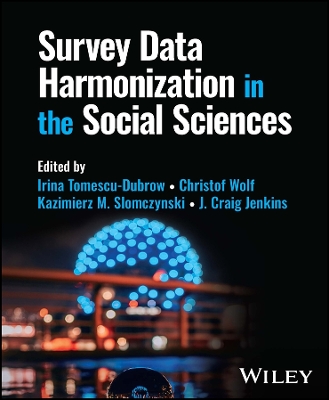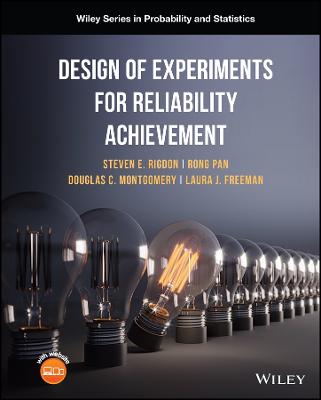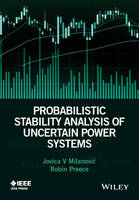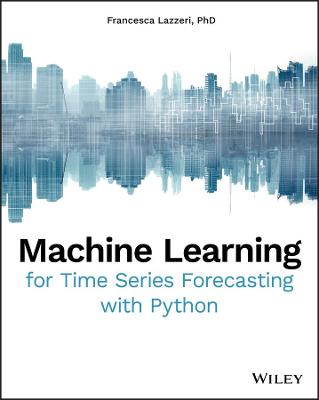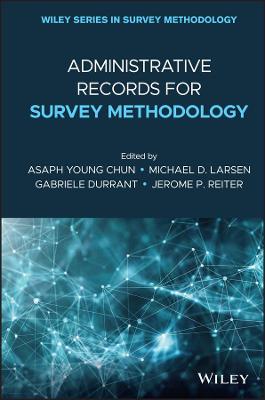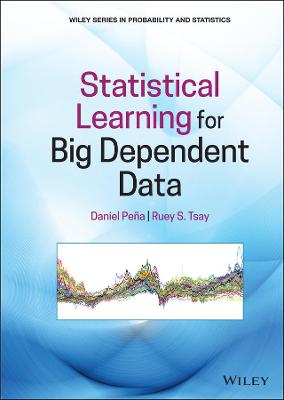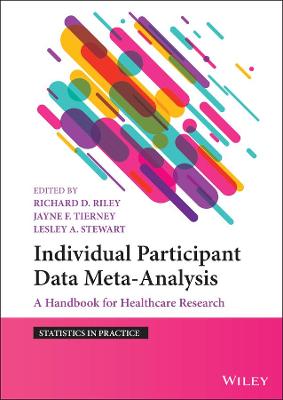Agent-based Models and Causal Inference
 -15%
portes grátis
-15%
portes grátis
Agent-based Models and Causal Inference
Manzo, Gianluca
John Wiley & Sons Inc
03/2022
176
Dura
Inglês
9781119704478
15 a 20 dias
460
List of Tables xii
Preface xiii
The Book in a Nutshell xvii
Introduction 1
1 The Book's Question 3
2 The Book's Structure 6
Part I: Conceptual and Methodological Clarifications 9
1 The Diversity of Views on Causality and Mechanisms 11
1.1 Causal Inference 11
1.2 Dependence and Production Accounts of Causality 13
1.3 Horizontal and Vertical Accounts of Mechanisms 17
1.3.1 Vertical versus Horizontal View 19
1.3.2 Horizontal versus Vertical View 21
1.4 Causality and Mechanism Accounts, and ABM's Perception 22
2 Agent-based Models and the Vertical View on Mechanism 25
2.1 ABMs and Object-oriented Programming 26
2.2 ABMs and Heterogeneity 27
2.3 ABMs and Micro-foundations 28
2.4 ABMs and Interdependence 28
2.5 ABMs and Time 29
2.6 ABMs and Multi-level Settings 30
2.7 Variables within Statistical Methods and ABMs 31
3 The Diversity of Agent-based Models 33
3.1 Abstract versus Data-driven ABMs: An Old Opposition 34
3.2 Abstract versus Data-driven ABMs: Recent Trends 36
3.3 Theoretical, Input, and Output Realism 38
3.4 Different Paths to More Realistic ABMs 40
3.4.1 "Theoretically Blind" Data-driven ABMs 41
3.4.2 "Theoretically Informed" Data-driven ABMs 45
Part 2: Data and Arguments in Causal Inference 49
4 Agent-based Models and Causal Inference 51
4.1 ABMs as Inferential Devices 52
4.1.1 The Role of "Theoretical Realism" 52
4.1.2 The Role of "Output Realism" and Empirical Validation 54
4.1.3 The Role of "Input Realism" and Empirical Calibration 55
4.1.4 In Principle Conditions for Causally Relevant ABMs 57
4.1.5 Can Data-driven ABMs Produce Information on Their Own? 58
4.2 In Practice Limitations 59
4.2.1 ABMs' Granularity and Data Availability 59
4.2.2 ABM's Granularity and Data Embeddedness 61
4.3 From-Within-the-Method Reliability Tools 62
4.3.1 Sensitivity Analysis 64
4.3.2 Robustness Analysis 65
4.3.3 Dispersion Analysis 65
4.3.4 Model Analysis 66
5 Causal Inference in Experimental and Observational Methods 69
5.1 Causal Inference: Cautionary Tales 71
5.2 In Practice Untestable Assumptions 73
5.2.1 RCTs and Heterogeneity 73
5.2.2 IVs and the "Relevance" Condition 74
5.2.3 DAGs, Causal Discovery Algorithms and Graph Indistinguishability 76
5.3 In Principle Untestable Assumptions 79
5.3.1 RCTs and "Stable Unit Treatment Value Assumption" (SUTVA) 79
5.3.2 IVs and the "Exclusion" Condition 81
5.3.3 DAGs and Strategies for Causal Identification 83
5.3.3.1 DAGs and the "Backdoor" Criterion 83
5.3.3.2 DAGs and the "Front Door" Criterion 84
5.4 Are ABMs, Experimental and Observational Methods Fundamentally Similar? 85
5.4.1 Objection 1: ABM Lacks "Formal" Assumptions 86
5.4.2 Objection 2: ABM Lacks "Materiality" 89
5.4.3 Objection 3: ABMs Lack "Robustness" 91
5.5 A Common Logic: "Abduction" 94
6 Method Diversity and Causal Inference 95
6.1 Causal Pluralism, Causal Exclusivism, and Evidential Pluralism 97
6.2 A Pragmatist Account of Evidence 99
6.3 Evidential Pluralism and "Coherentism" 101
6.4 When is Diverse Evidence Most Relevant? 104
6.5 Examples of Method Synergies 106
6.5.1 Obesity: ABMs and Regression Models 106
6.5.2 Network Properties: ABMs and SIENA Models 109
6.5.3 HIV prevalence: ABMs and RCTs 111
6.5.4 HIV treatments: ABMs and DAG-based identification strategies 113
Coda 115
1 Possible Objections 116
1.1 Causation is Not Constitution 117
1.2 Lack of a Specific Research Strategy 118
1.3 A Limited Methodological Spectrum 119
2 Summary 121
References 127
Index 149
List of Tables xii
Preface xiii
The Book in a Nutshell xvii
Introduction 1
1 The Book's Question 3
2 The Book's Structure 6
Part I: Conceptual and Methodological Clarifications 9
1 The Diversity of Views on Causality and Mechanisms 11
1.1 Causal Inference 11
1.2 Dependence and Production Accounts of Causality 13
1.3 Horizontal and Vertical Accounts of Mechanisms 17
1.3.1 Vertical versus Horizontal View 19
1.3.2 Horizontal versus Vertical View 21
1.4 Causality and Mechanism Accounts, and ABM's Perception 22
2 Agent-based Models and the Vertical View on Mechanism 25
2.1 ABMs and Object-oriented Programming 26
2.2 ABMs and Heterogeneity 27
2.3 ABMs and Micro-foundations 28
2.4 ABMs and Interdependence 28
2.5 ABMs and Time 29
2.6 ABMs and Multi-level Settings 30
2.7 Variables within Statistical Methods and ABMs 31
3 The Diversity of Agent-based Models 33
3.1 Abstract versus Data-driven ABMs: An Old Opposition 34
3.2 Abstract versus Data-driven ABMs: Recent Trends 36
3.3 Theoretical, Input, and Output Realism 38
3.4 Different Paths to More Realistic ABMs 40
3.4.1 "Theoretically Blind" Data-driven ABMs 41
3.4.2 "Theoretically Informed" Data-driven ABMs 45
Part 2: Data and Arguments in Causal Inference 49
4 Agent-based Models and Causal Inference 51
4.1 ABMs as Inferential Devices 52
4.1.1 The Role of "Theoretical Realism" 52
4.1.2 The Role of "Output Realism" and Empirical Validation 54
4.1.3 The Role of "Input Realism" and Empirical Calibration 55
4.1.4 In Principle Conditions for Causally Relevant ABMs 57
4.1.5 Can Data-driven ABMs Produce Information on Their Own? 58
4.2 In Practice Limitations 59
4.2.1 ABMs' Granularity and Data Availability 59
4.2.2 ABM's Granularity and Data Embeddedness 61
4.3 From-Within-the-Method Reliability Tools 62
4.3.1 Sensitivity Analysis 64
4.3.2 Robustness Analysis 65
4.3.3 Dispersion Analysis 65
4.3.4 Model Analysis 66
5 Causal Inference in Experimental and Observational Methods 69
5.1 Causal Inference: Cautionary Tales 71
5.2 In Practice Untestable Assumptions 73
5.2.1 RCTs and Heterogeneity 73
5.2.2 IVs and the "Relevance" Condition 74
5.2.3 DAGs, Causal Discovery Algorithms and Graph Indistinguishability 76
5.3 In Principle Untestable Assumptions 79
5.3.1 RCTs and "Stable Unit Treatment Value Assumption" (SUTVA) 79
5.3.2 IVs and the "Exclusion" Condition 81
5.3.3 DAGs and Strategies for Causal Identification 83
5.3.3.1 DAGs and the "Backdoor" Criterion 83
5.3.3.2 DAGs and the "Front Door" Criterion 84
5.4 Are ABMs, Experimental and Observational Methods Fundamentally Similar? 85
5.4.1 Objection 1: ABM Lacks "Formal" Assumptions 86
5.4.2 Objection 2: ABM Lacks "Materiality" 89
5.4.3 Objection 3: ABMs Lack "Robustness" 91
5.5 A Common Logic: "Abduction" 94
6 Method Diversity and Causal Inference 95
6.1 Causal Pluralism, Causal Exclusivism, and Evidential Pluralism 97
6.2 A Pragmatist Account of Evidence 99
6.3 Evidential Pluralism and "Coherentism" 101
6.4 When is Diverse Evidence Most Relevant? 104
6.5 Examples of Method Synergies 106
6.5.1 Obesity: ABMs and Regression Models 106
6.5.2 Network Properties: ABMs and SIENA Models 109
6.5.3 HIV prevalence: ABMs and RCTs 111
6.5.4 HIV treatments: ABMs and DAG-based identification strategies 113
Coda 115
1 Possible Objections 116
1.1 Causation is Not Constitution 117
1.2 Lack of a Specific Research Strategy 118
1.3 A Limited Methodological Spectrum 119
2 Summary 121
References 127
Index 149


